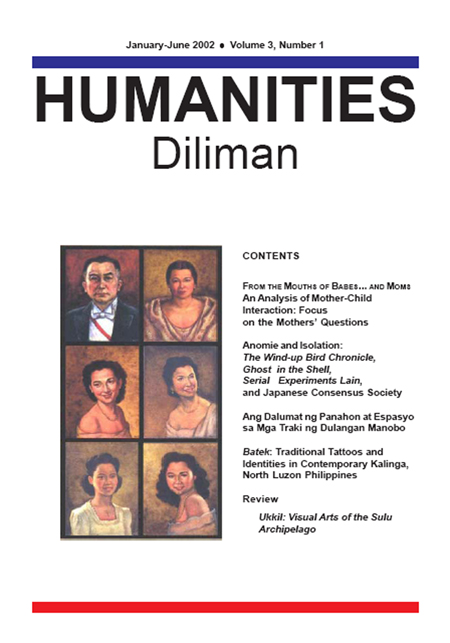Batek: Traditional Tattoos and Identities in Contemporary Kalinga, North Luzon Philippines
Abstract
In the early 16th century, traditional tattooing is widespread in the Philippines, but very little is known or written about the practice. Sources for the study of traditional tattoos in Northern Luzon are very inadequate and merely make vague statements on the function and symbolic meaning of tattoos, as well as the relationship between the practice and culture as a whole. The statements likewise reveal a distinctly ethnocentric deportment. Until today, tattooing and tattoo designs in the Cordilleras are best understood within the context of headhunting. Headhunting was the only known reason for tattooing, and, to this day, no one knows exactly what tattoos signify. This paper provides insights into the roles and functions of the tattoos, and how the tattoos (batek) become cultural symbols of the intricate rituals brought about by community regimens of the Ilubo, Kalinga. No longer practiced, the batek of the Ilubo is a visually powerful rendering of symmetry and unity of designs. Batek now serve as an archive of culture for the group.
Published
2007-02-28
How to Cite
SALVADOR-AMORES, Analyn Ikin V..
Batek: Traditional Tattoos and Identities in Contemporary Kalinga, North Luzon Philippines.
Humanities Diliman: A Philippine Journal of Humanities, [S.l.], v. 3, n. 1, feb. 2007.
ISSN 2012-0788.
Available at: <https://journals.upd.edu.ph/index.php/humanitiesdiliman/article/view/32>. Date accessed: 19 aug. 2025.
Issue
Section
Articles


